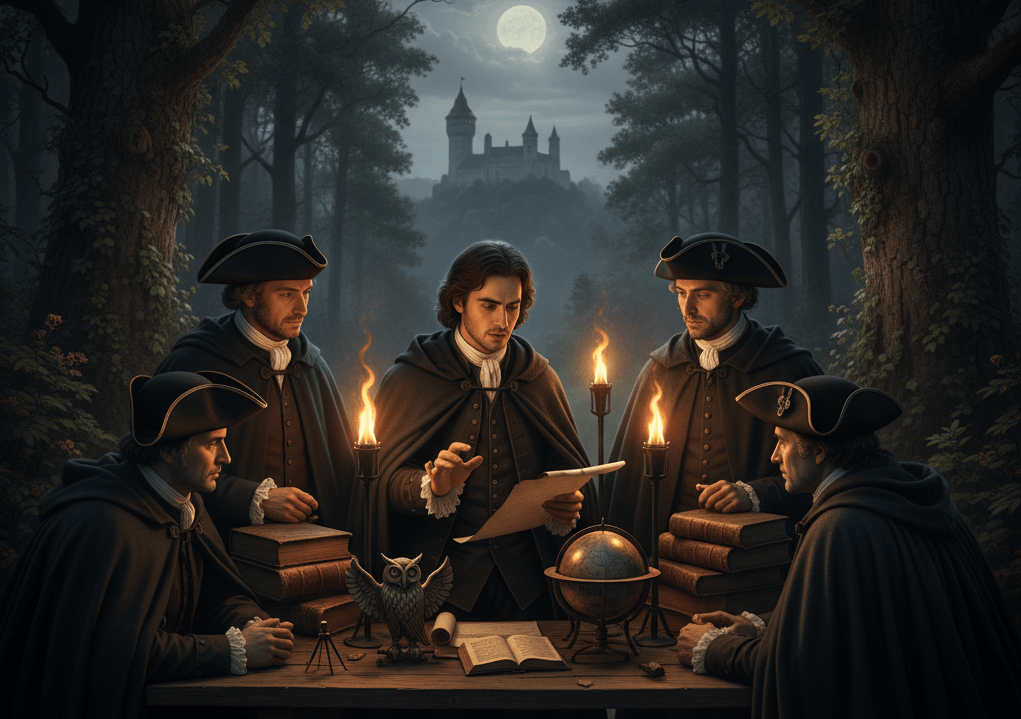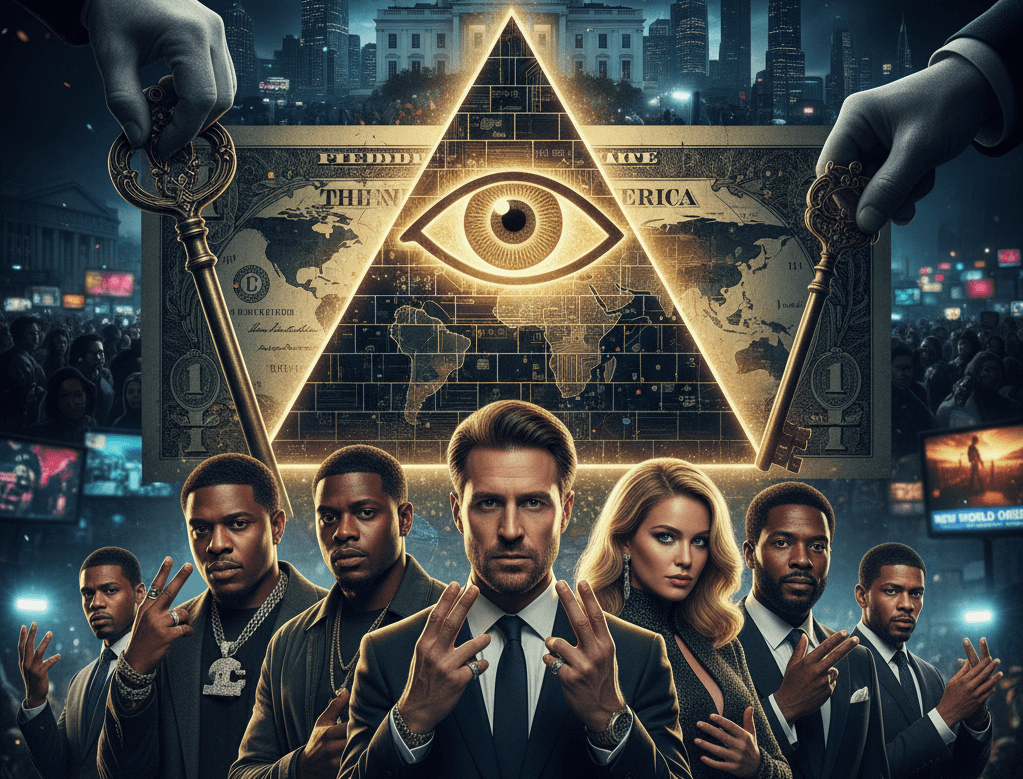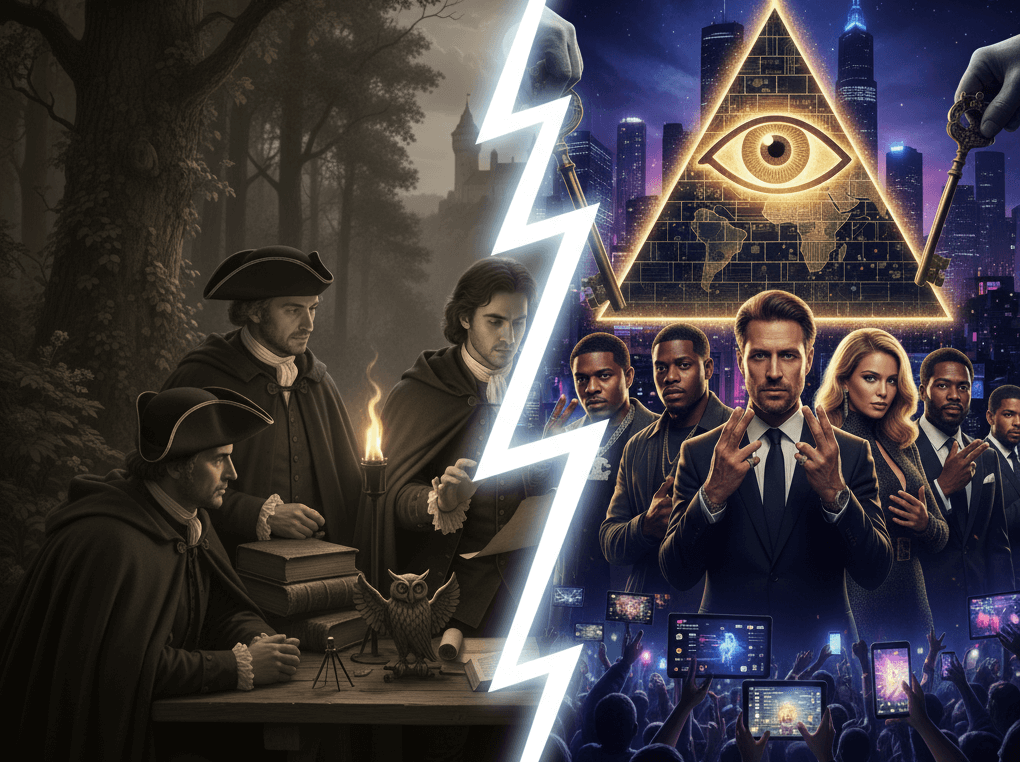Today, the word "Illuminati" makes people think of secret puppet masters pulling the strings of world events, famous people making strange hand gestures, and dollar bills with all-seeing eyes on them. The Illuminati has become one of the most well-known symbols of hidden power in popular culture, from hip-hop lyrics to big Hollywood movies. But how much of this modern mythology is based on what really happened in the past?
The truth is both easier to understand and more interesting than the conspiracy theories say. The historical Illuminati was a real group that only lasted nine years in 18th-century Bavaria. It was started by a university professor who wanted to spread Enlightenment ideas, not take over the world. But even though it only lasted a short time, it sparked centuries of speculation, fear, and fantasy that still shape our cultural imagination today.

The Historical Truth: Bavaria, 1776-1785
Five men met by torchlight in a forest near Ingolstadt, Bavaria, on May 1, 1776, to start what would become one of history's most famous secret societies. Adam Weishaupt, a 28-year-old professor of canon law at the University of Ingolstadt, was in charge of them. He was getting more and more angry with the conservative Catholic orthodoxy that ruled Bavarian intellectual life.
Weishaupt was born in Ingolstadt in 1748 to Jewish converts to Christianity. He became an orphan when he was seven years old and was raised by his godfather, Baron Johann von Ickstatt. Von Ickstatt was a well-known teacher and Enlightenment scholar whose large library had many books that were not allowed and were hard to understand. Weishaupt's view of the world would be greatly affected by this early exposure to forbidden ideas.
The Original Goals
Weishaupt's first name for his group was the "Perfectibilists," which showed that they thought human nature could be improved through reason and education. Later, they were called the "Illuminati," which comes from the Latin word "illuminatus," which means "enlightened." The Owl of Minerva was their symbol, which stands for wisdom, not the all-seeing eye that people today think of when they hear the name.
The Illuminati's goals were very different from what most people thought at the time, but they were in line with Enlightenment ideas. Their written records say that they wanted to "oppose superstition, obscurantism, religious influence over public life, and abuses of state power by monarchs." Weishaupt wanted to create "a state of liberty and moral equality, free from the obstacles that subordination, rank, and wealth always put in our way."
Structure and Growth
There were three main groups in the organization: novices, minervals, and illuminated minervals. Members used fake names based on classical antiquity; for example, Weishaupt called himself "Spartacus." This practice of using fake names, along with their use of ciphers for internal communication, made things seem mysterious, which later led to conspiracy theories.
They only hired people who were educated and had a lot of power. Weishaupt's surviving letters show that people who wanted to join the order needed to have "good manners and social skills" and should have been "hard-working, skillful, powerful, and rich." The order attracted writers, thinkers, and nobility from all over Europe, including Johann Wolfgang von Goethe (though how much he was involved is still up for debate).
At its height in 1782, the Illuminati had about 2,000 members all over Europe, from Italy to Denmark and from Warsaw to Paris. But this impressive reach was mostly because they infiltrated existing Masonic lodges instead of directly recruiting new members.
The Suppression
The Illuminati fell apart quickly. In 1784, a former member named Joseph Utzschneider told the Bavarian government about the group because he was unhappy with it. Elector Karl Theodor, who was already wary of secret societies, banned all of them in March 1785. Police raids found incriminating papers, such as plans for a women's branch of the order, recipes for invisible ink, and medical instructions for abortions. The authorities used this information to paint the group as dangerous revolutionaries.
The End of an Era
In Bavaria, being a member of the Illuminati was punishable by death by 1787. Weishaupt ran away to Saxony, where he spent the rest of his life writing defenses of his failed group. There is no reliable historical evidence that the Bavarian Illuminati continued to exist in any organized way after 1785.
The Beginning of the Myth
The Illuminati had the most power after it was stopped, which is ironic. In 1797, French Jesuit Abbé Augustin Barruel wrote "Memoirs Illustrating the History of Jacobinism," in which he said that the Illuminati planned the French Revolution. Scottish professor John Robison also made similar claims in his book "Proofs of a Conspiracy," which came out around the same time.
People who were having a hard time understanding how quickly society was changing were eager to read these books, which were written during a time of revolutionary upheaval in Europe and America. Many people preferred to believe in a secret plot by a small group of masterminds rather than accepting that complicated historical forces had caused the French Revolution.

The idea spread quickly across the Atlantic. By 1798, American ministers were preaching against the Illuminati, and Thomas Jefferson was even accused of being a member. George Washington had to write a public letter saying that the Illuminati did not pose a threat to America. However, just by mentioning the group, he helped spread the conspiracy theory.
The Evolution of the Modern Myth
Over the years, the Illuminati conspiracy theory changed a lot to fit the fears of each time period. In the 19th century, it combined with conspiracy theories that were against Masons and Jews. People were afraid of communism and later capitalism in the 20th century. In the digital age, these theories have grown by leaps and bounds. Social media makes it easy for false claims to spread quickly.
Some important changes in modern mythology are:
The New World Order Connection
Many people who believe in modern conspiracy theories mix up the Illuminati with ideas about a "New World Order," which is a plan for a totalitarian world government. There is no historical basis for this connection because the original Illuminati's goals were more about Bavaria and Enlightenment ideas than world domination.
Popular Culture Amplification
Robert Shea and Robert Anton Wilson's 1975 satirical "Illuminatus! Trilogy" added a lot of modern elements to Illuminati mythology, often as a joke. Dan Brown's 2000 book "Angels & Demons" made the idea popular, but it had a lot of historical mistakes.

Celebrity Culture Integration
Integration of Illuminati theories into celebrity culture may be the most important change that has happened. People have said that Madonna, Beyoncé, Jay-Z, and other musicians are members based on symbolic gestures, lyrics, or stage images. A lot of these famous people have publicly denied these claims. Jay-Z called them "stupid," and Katy Perry told Rolling Stone that the theory was for "weird people on the internet." But these denials only make true believers more curious.
Digital Age Proliferation
The internet has made it easier than ever for conspiracy theories to spread. YouTube videos that "expose" celebrity connections to the Illuminati get millions of views all the time. Social media algorithms can make echo chambers where these ideas are supported and spread.
The Psychology of Belief
To comprehend the persistence of Illuminati conspiracy theories, it is essential to analyze the psychological needs they fulfill. Conspiracy psychology research delineates three principal motivations:
- Epistemic Needs: Conspiracy theories offer straightforward elucidations for intricate occurrences. Believers can blame everything on one mysterious group instead of trying to understand the complicated social, economic, and political forces that shape world events.
- Existential Needs: It may seem strange, but believing in a secret group that controls everything can make you feel better. If people are to blame for the problems in the world, then they might be able to fix them. It's easier to accept that many things happen by chance or because of impersonal forces.
- Social Needs: Conspiracy theories can help people feel like they belong to a group and that they know something special. People who believe often think of themselves as wise people who have found truths that other people can't see.
The Evidence Problem
Modern Illuminati conspiracy theories encounter a fundamental evidential challenge: there is no credible evidence supporting the existence of any continuation of the original Bavarian organization. A number of modern organizations have taken on the name "Illuminati," but research into history shows that there is no real link to Weishaupt's 18th-century society.
Examining the "Evidence"
The so-called "evidence" usually includes:
- Symbol Interpretation: Looking for Illuminati symbols in logos, buildings, or movies. But the eye and pyramid are examples of symbols that have been around for a long time and mean different things in different cultures.
- Celebrity Gestures: Seeing hand gestures or stage performances as signs of the Illuminati. Most of these interpretations need a lot of imagination and don't take into account more simple explanations.
- Historical Misattribution: Giving the Illuminati credit for historical events they couldn't have had an effect on because they didn't last long and were only in a small area.
- Coincidental Dates: The fact that both the founding of the Illuminati and the signing of the Declaration of Independence happened in 1776 is used as proof of a link, even though it was just a coincidence.
The Cultural Impact
The modern Illuminati myth has a big effect on culture, even though it isn't historically accurate. It serves as a way to talk about worries about:
- Globalization: Concerns regarding the erosion of local governance in an increasingly interconnected world
- Technological Change: Worries about being watched and having social media used against you
- Economic Inequality: Anger toward rich elites and the power they seem to have
- Cultural Change: Unhappiness with changing social values and norms
The ongoing existence of these theories prompts significant inquiries regarding media literacy and the education of critical thinking. In a time when there is a lot of information, it is more important than ever to be able to judge sources and evidence.
Academic and Expert Perspectives
Historians and conspiracy theory researchers consistently underscore the disparity between historical fact and contemporary mythology. Dr. Michael Taylor, an Illuminati expert at University College London, says that the Illuminati theories of today are very different from the real group that existed in the past.
French historian René Le Forestier's thorough study, which is widely regarded as the most important academic work on the subject, shows through careful examination of primary sources that the Bavarian Illuminati's power was limited and short-lived. There is no proof that these claims of survival or continued influence are true.
The Entertainment Industry Response
It's interesting that a lot of famous people who have been accused of being members of the Illuminati have responded with humor instead of anger. Some performers, like Jay-Z and Beyoncé, use Illuminati symbols in their shows on purpose to get people talking and to get attention. People who really believe in something often take these kinds of responses as proof that they are members.
In 2015, Madonna even made a song called "Illuminati," in which she called the group "people who have minds that see the world in a different way." Her tongue-in-cheek style shows how the conspiracy theory has become a form of entertainment in its own right.
Distinguishing Fact from Fiction
There are a few important things to remember when trying to tell the difference between historical truth and modern myth:
- Duration: The historical Illuminati only lasted for nine years, from 1776 to 1785. This is way too short for the long-term conspiracy that modern theorists say happened.
- Scale: At its height, the group had about 2,000 members, most of whom lived in German-speaking areas. This is not enough to take over the world.
- Documentation: The Bavarian government made public Illuminati papers that had been taken in 1787. These show that the group is more interested in Enlightenment ideas and reforming the region than in taking over the world.
- Continuity: There is no reliable evidence that any contemporary organization has authentic historical continuity with Weishaupt's Illuminati.
- Modern Claims: Most modern theories about the Illuminati say things that the real group would never have said, like that they control the media or change popular culture.
Conclusion: Legacy and Lessons
The story of the Illuminati is a great example of how historical facts can change over time. A small group from the Enlightenment era that worked to promote reason and fight superstition has become the ultimate symbol of hidden power and occult influence.
This change is part of a bigger trend in how conspiracy theories grow and spread. The Illuminati did exist, they were secretive, and they did try to change society. These facts are often the starting point for stories that become much more exaggerated and twisted over time.
"The real Adam Weishaupt would probably be shocked and horrified to learn that his short experiment in Enlightenment idealism has turned into the most famous modern conspiracy theory. His goal was to promote reason over superstition, which is the exact opposite of what people think of when they hear the name of his group."
The continued popularity of Illuminati theories shows how much people like stories that promise easy answers to hard questions. In a world that is getting more complicated, the idea that one group controls everything gives people a sense of order, even if that order is bad.
Critical Thinking Reminder
The Illuminati phenomenon exemplifies the paramount significance of historical literacy and critical analysis. In a time when false information spreads like wildfire and people only hear what they want to hear online, it is more important than ever to be able to tell the difference between real historical facts and unproven guesses.
There are many different versions of the Illuminati, and whether it is a secret society or a modern myth depends on which one we're talking about. The historical organization was real, but it was short-lived and had a narrow focus. The modern conspiracy theory is definitely not true, but it has had a big effect on culture and society.
In our digital age, the Illuminati is a strong reminder that facts can become mixed up with fiction when they are filtered through years of guesswork, fear, and imagination. The challenge for people today is learning how to tell them apart.
